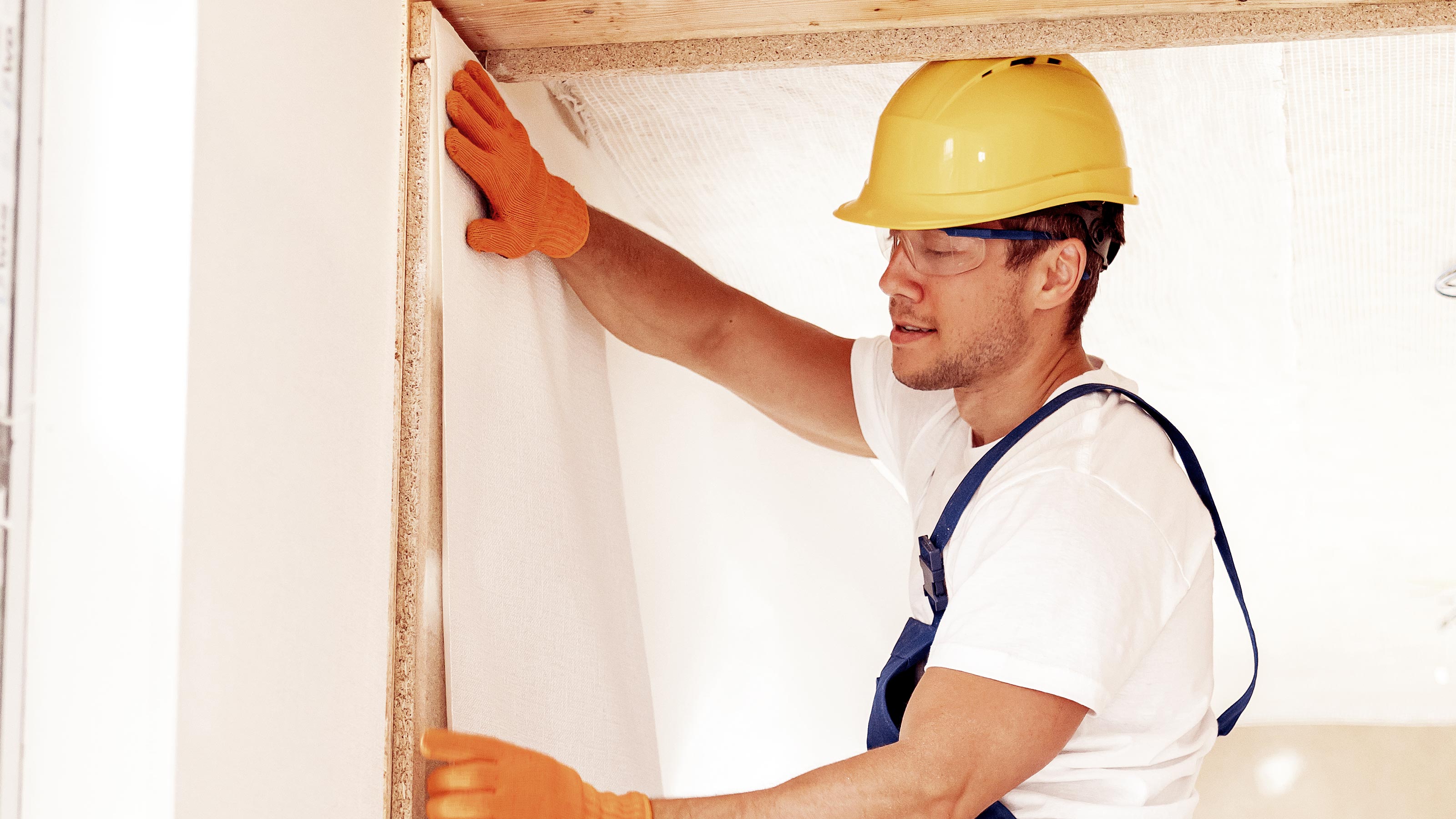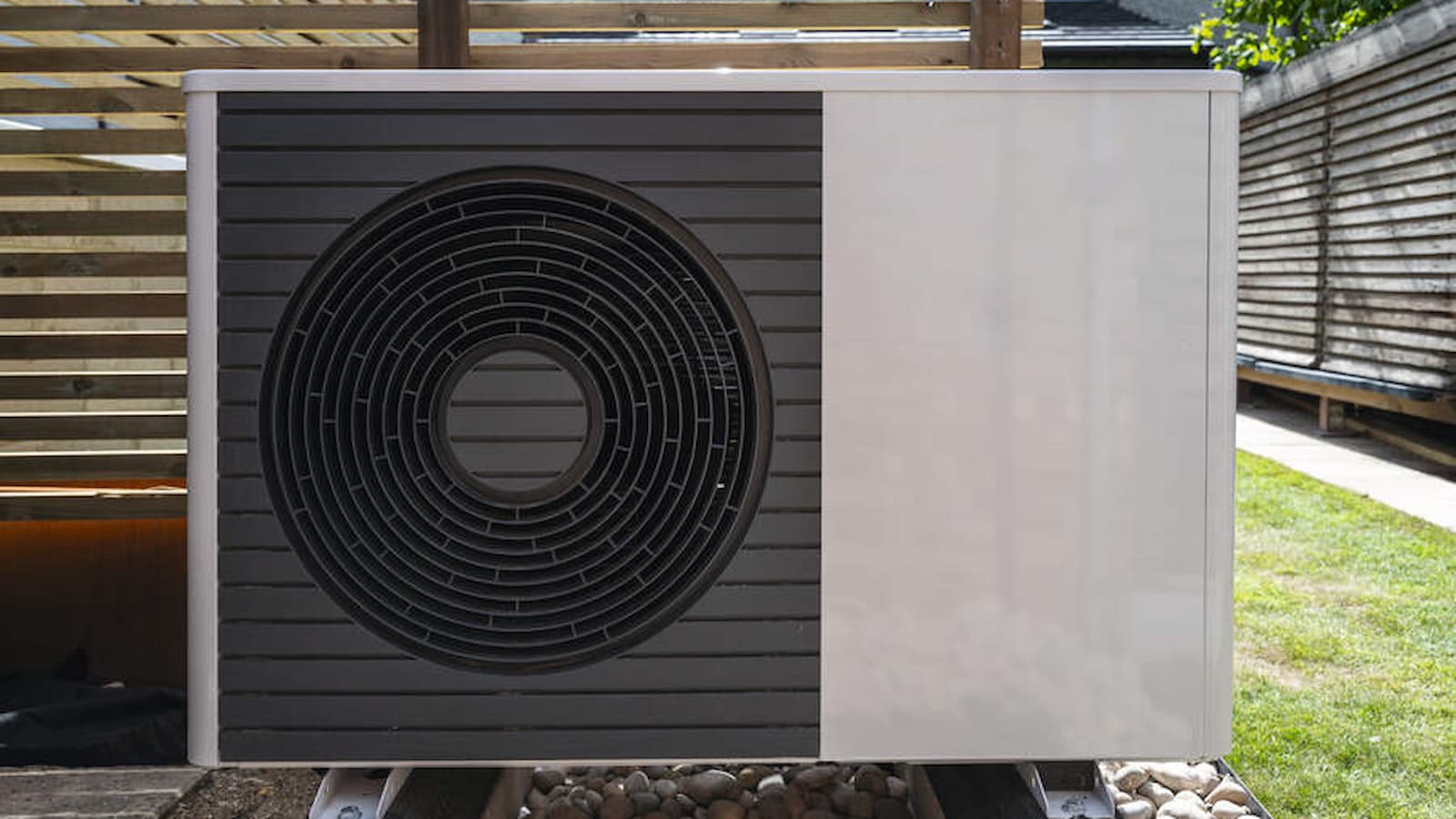Insulating wallpaper: A quick, cheap way to warm your home?
Introducing insulating wallpaper and liners into your home could reap instant benefits. Here we look at the pros, cons and how to hang insulating wallpaper

Insulating wallpapers, insulating lining paper and thermal liners are quick, simple and relatively cheap options which could help cut down on heating bills. They are specifically designed to create a barrier to help reduce the heat transfer through walls and ceilings.
Whilst they certainly won't be as effective as insulating a wall, insulating wallpaper is speedy and inexpensive meaning you can have it up in no time at all with little disruption. It can be painted or wallpaper added to create a further insulating layer.
Here we check out the pros and cons of using insulating paper and give tips on how to hang.
Is insulating wallpaper any good?
Insulating wallpapers, insulating lining paper and thermal liners are a quick and budget-friendly way to insulate your wall.
But they are not the perfect solution as Tim Pullen, an expert in sustainable building methods and energy efficiency in residential homes, explains: "Thermal and insulating wallpapers might be considered 'anything is better than nothing' products. Being only 4mm thick they are not great insulators. When we consider that for a new build the minimum insulation in a wall would be 70mm then we get a better idea of the value of 4mm of insulation."
But there is a positive side: "Having said that it does make the wall feel warmer, reduces condensation and potential mould growth and is relatively cheap — and, better than nothing."
Here we take a closer look at their plus and minus points.
What are the benefits of insulating wallpaper?
There are a couple of benefits to insulating wallpaper, including:
1. Relatively inexpensive
The price range for insulating paper can vary greatly depending on what type and brand you buy. At the lower end of the scale you can purchase a polystyrene thermal insulation roll and combine with lining paper for around £10 for standard 10m rolls. You would need around three rolls to do a 4m x 3m wall.
Alternatively you can invest in insulated lining paper which is lining paper with an insulated backing which can be purchased for around the same price per roll. This is quicker to put up as it's a single integrated roll.
2. Hiding wall imperfections
If you have cracked plaster, uneven wall areas or textured walls, adding a layer of insulating lining paper or wallpaper will go a long way to giving you a smoother finish ready to paper or paint. Plus, it can be cheaper than reskimming a room in plaster. Insulating paper is thicker than standard wallpapers – typically 4mm – so it helps hide imperfections. In one sense it's similar to skimming plasterboard in that you get a smooth surface to work with when done.
3. Instantly helps a room feel warmer
Once you have put up your insulating paper and finished with wallpaper or paint you will instantly notice the difference between an uninsulated wall and an insulated wall. This is especially true on interior walls facing the outside.
From my own personal experience of using insulating lining paper there is a noticeable difference between a wall with just standard wallpaper and insulating wallpaper.
I have outside facing walls with and without insulating paper. Placing a hand on each reveals that one wall was slightly warmer than the other. But the insulated wall absorbs the heat and warms up much quicker than the uninsulated wall which stays at the same temperature.
This means I can keep the heating a few degrees lower and still be warm and it has the benefit of providing low-level sound isolation.
What are the cons of insulating wallpaper?
Despite its benefits, there are however some drawbacks:
1. It's not easy to hang
Insulating wallpaper is a lot thicker than standard lining paper or wallpaper so it is not as easy to hang as standard wallpaper. When it comes to corners and edges you need to be more precise with measurements and cutting to get a good fit. You will probably need to use a specialist adhesive, which costs more than wallpaper paste.
2. Easy to dent
The backing of insulating wallpaper isn’t as strong as a plastered wall, so you need to be careful when painting, wallpapering or moving furniture against walls so as not to cause any dents. If you do you will need to fill and appoint to repair.
3. It's not a permanent solution
Insulating wallpaper provides faster room heat up times and makes a room better at retaining heat keeping a constant ambient temperature for longer. Which means you can save on energy costs. However, it is not as effective as insulating your home or insulating walls and won't last as long. Expect to get five to 10 years out of insulating wallpaper.
How do you hang insulating wallpaper?
Here we take a look at hanging insulating wallpaper. If you know how to wallpaper, hanging insulating paper won’t prove too much of a challenge. The process is very similar for both thermal insulation and insulated wallpaper.
1. Measure up
Measure the drop on both edges of where the wallpaper edges are going to go. Roll out the wallpaper on a pasting table and cut within a few inches of the drop length so there isn’t too much to trim. Measure twice to ensure you have the right length.
2. Paste wall
Get a roller and apply the adhesive generously to the wall. Make sure to work into all areas. If needed, get a brush or spatula and apply the adhesive in the hard to reach areas.
3. Place and cut
Now slide the insulating wallpaper into place and brush down with a wallpaper brush, using a down and out motion to get rid of air. Once in place get a straight edge – a piece of wood, steel ruler, spirit level will do – and place along the area to be trimmed. Use a sharp trimming knife to get a clean cut.
4. Corner cuts
For corners make sure you have a good straight edge on both edges of the wallpaper. One edge should be slightly over the wall edge by the depth of the insulating wallpaper, i.e 4mm. Then butt the other edge to the first edge to create nice neat square edges.
If not quite right, leave until completely dry and use a trimming knife to trim and a general purpose filler to fill any holes. Rub down when dry ready for painting or wallpapering over.
Can I use wallpaper paste to hang insulating wallpaper?
Insulating wallpaper is typically a lot thicker than standard wallpaper so cannot be hung with standard wallpaper paste.
For some you can use extra strong wallpaper paste but it is recommended that you use a specialist adhesive such as WallRock Thermal Liner adhesive.
Can you wallpaper over insulating lining paper?
Typically, yes you can but it depends on what type of insulating lining paper you buy. Some insulating lining papers are just a polystyrene roll that needs to be covered with lining paper or wallpaper.
But commonly insulating lining paper or thermal liners have insulating materials covered with a layer of lining paper, meaning that once hung they can be painted or wallpapered as you would any other wallpaper.
Can you paint over insulating wallpaper?
Yes, but it does depend on what brand of insulating wallpaper you are using. Most insulating wallpapers allow you to directly paint onto the paper as if you were painting over wallpaper without any insulation. But some are more suitable as a liner that can be wallpapered over.
Get the Homebuilding & Renovating Newsletter
Bring your dream home to life with expert advice, how to guides and design inspiration. Sign up for our newsletter and get two free tickets to a Homebuilding & Renovating Show near you.
Steve Jenkins is a freelance content creator with over two decades of experience working in digital and print and was previously the DIY content editor for Homebuilding & Renovating.
He is a keen DIYer with over 20 years of experience in transforming and renovating the many homes he has lived in. He specialises in painting and decorating, but has a wide range of skills gleaned from working in the building trade for around 10 years and spending time at night school learning how to plaster and plumb.
He has fitted kitchens, tiled bathrooms and kitchens, laid many floors, built partition walls, plastered walls, plumbed in bathrooms, worked on loft conversions and much more. And when he's not sure how to tackle a DIY project he has a wide network of friends – including plumbers, gas engineers, tilers, carpenters, painters and decorators, electricians and builders – in the trade to call upon.

